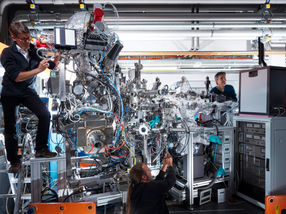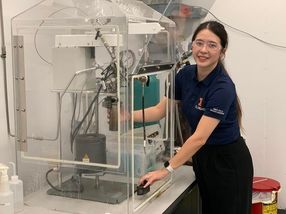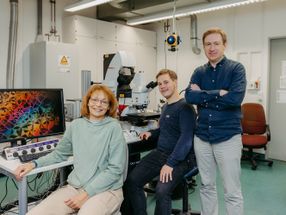Speed up your NMR data acquisition by using DTPA-chelated lanthanides as relaxation agents
Advertisement
There has been an increase in the popularity and practical application of hyperpolarization NMR/MRI. One way to achieve high levels of nuclear spin polarization is based on the notion that as the temperature is reduced (characterized by the spin-lattice relaxation time, T1), the equilibrium nuclear polarization will increase, according to the Boltzmann distribution. The main problem with this approach is the length of time it may take to approach thermal equilibrium at low temperatures, since nuclear relaxation times can become very long.
Now, scientists in the UK show that DTPA(diethylene triamine pentacetic acid)-chelated lanthanides can be used as spin-lattice relaxation T1-shortening agents of nuclear spins, to expedite NMR data. Differential effects are seen with different lanthanides, with holmium and dysprosium causing the most relaxation, while gadolinium is ineffective at temperatures of 20 K and below.
Reducing the T1 values of the relevant nuclei increases the rate at which data can be acquired, and this new method is hoped to have applications in routine chemical analysis, as well as in selected tissue metabolism studies that require only coarse spatial localization.
Most read news
Other news from the department science

Get the chemical industry in your inbox
By submitting this form you agree that LUMITOS AG will send you the newsletter(s) selected above by email. Your data will not be passed on to third parties. Your data will be stored and processed in accordance with our data protection regulations. LUMITOS may contact you by email for the purpose of advertising or market and opinion surveys. You can revoke your consent at any time without giving reasons to LUMITOS AG, Ernst-Augustin-Str. 2, 12489 Berlin, Germany or by e-mail at revoke@lumitos.com with effect for the future. In addition, each email contains a link to unsubscribe from the corresponding newsletter.































































